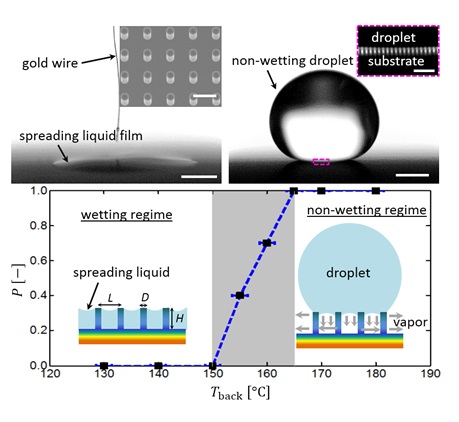Non-Wetting Droplets on Hot Superhydrophilic Surfaces

Manipulating droplet morphology on surfaces is important for various engineering applications such as microfluidics, drag reduction, self-cleaning, water harvesting, anti-corrosion, anti-fogging, anti-icing, and thermal management. It has been well known that droplets on textured hydrophilic, i.e. superhydrophilic, surfaces form thin-films with near zero contact angles. Here we show an interesting droplet morphology control strategy where non-wetting droplets are formed by mild heating of superhydrophilic surfaces beyond the saturation temperature of the liquid. While such behavior is generally not expected on superhydrophilic surfaces, an evaporation-induced pressure due to the increased thermal conductivity and decreased vapor permeability of the structured region allows this behavior to be observed at such low temperatures. This phenomenon is distinct from the widely researched Leidenfrost and offers an expanded parametric space for fabricating surfaces with desired temperature-dependent wettability.
This work has been published in Nature Communications (2013, 4, 2518)




